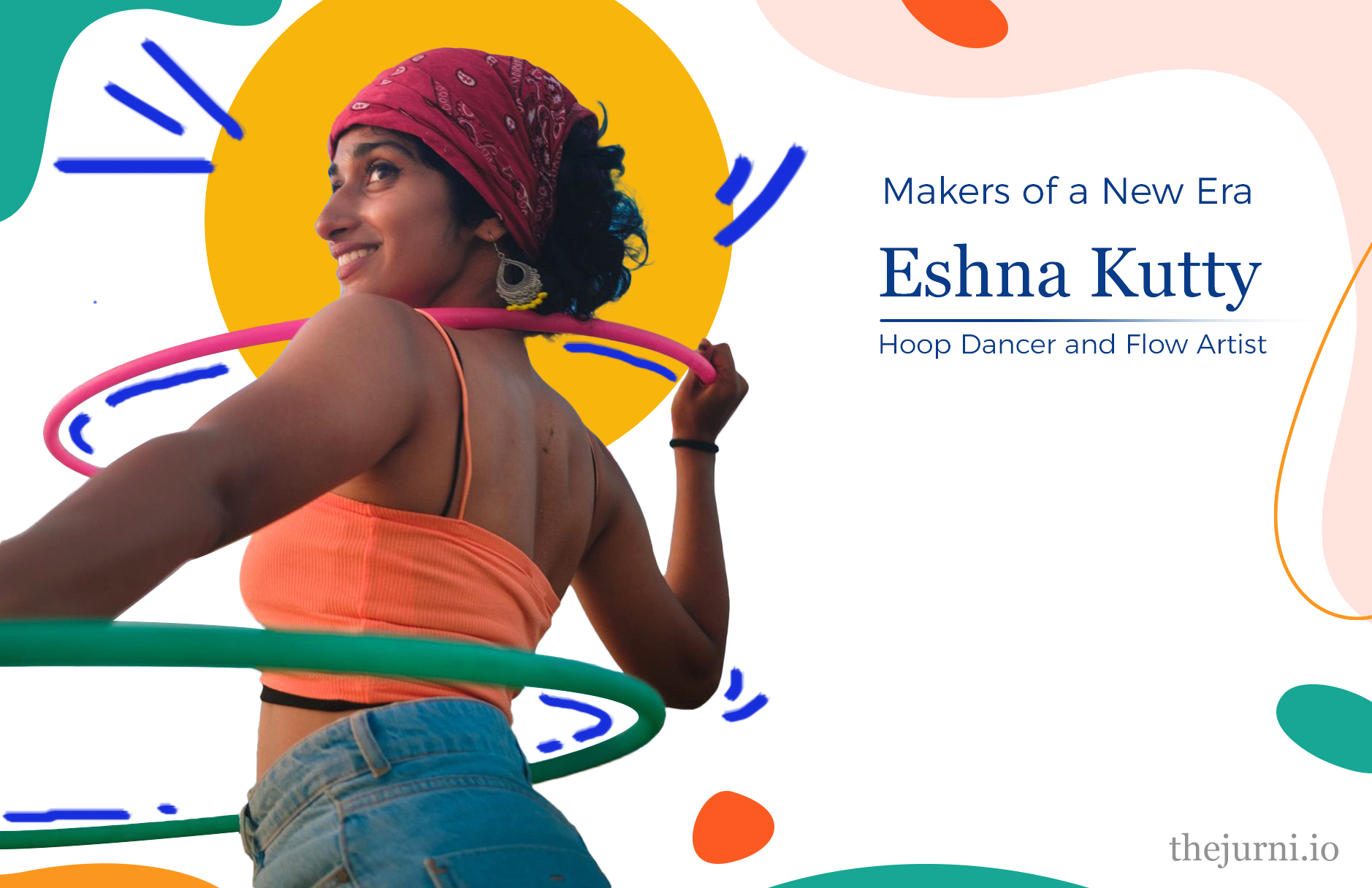
The hula hoop artist talks to us about dance, flow, and how it can help professionals
The last few years have been instrumental in highlighting the benefits of art and its many modes in our lives. While some art can be looked at and admired, others can make a difference to our lives through participation. And a great example of that is Eshna Kutty’s hula hooping. In 2020, her first video went viral – clad in a sari and sneakers, Kutty danced (and hooped) her heart out to the Rekha Bharadwaj song Genda Phool. There has been no looking back since.
“I got exposed to hoop dancing after randomly stumbling upon a video on YouTube. From there on began the discovery of a lot of other flow art... I didn’t realise this curiosity would eventually go on to shape my life so deeply,” Kutty says.
She teaches hula hooping at present, a recreational activity that many working professionals can gain from as it enables a state of flow, which can be beneficial in more ways than one. “[Contrary to the common misconception,] I have 60+ year olds who are nailing it, have no background in fitness, and they can do a lot more than just waist hooping,” she adds.
In a recent chat with The Jurni, Kutty sat down to tell us all about hula hooping in India, how and where we can start, how her background in psychology helps her, and more. You can read the full interview here.
Your hula hoop performances are loved by many around the world. What made you get into flow arts and movement therapy? Did you learn it professionally?
I got exposed to hoop dancing after randomly stumbling upon a video on YouTube. From there on began the discovery of a lot of other flow art forms. I didn’t realise this curiosity would eventually go on to shape my life so deeply. This was also when I was studying psychology and wanted to pursue my Masters in it. Upon learning that there’s an alternative path in Dance/Movement Therapy, which seemed to perfectly bind my two loves together, it was a no-brainer to take the plunge.
While hula hooping is a more famous form of flow arts. It isn’t restricted to just that. Please help our readers understand what flow art is.
In very simple language, flow arts is an umbrella term to describe dancing, playing, and spinning with a prop. It goes beyond using them functionally by using them artistically instead. For example, juggling is a flow art form. The function of any ball is to play catch with it, but you know what juggling looks like, right?
And just like that there are so many flow toys in the world –pois, fire toys, staffs, hula hoops, slacklines. These flow toys are like an intersection between object manipulation and dance/martial arts.
What are some of the most common misconceptions about hula hooping, especially in India, that you have come across?
There are actually many! The most common one being that it’s a toy that only little kids play with. Two, that one can only do waist hooping with it and there’s nothing beyond that. Three, those who are aware that you can do more with it have probably seen it in gymnastics and circuses, and feel it requires an insane amount of strength and flexibility. And lastly, if you don’t pick it up at an early age, you really can’t learn it.
All of the above are untrue. I have 60+ year olds who are nailing it, have no background in fitness, and they can do a lot more than just waist hooping.
Many working professionals have pursued their hobbies and passions, especially during the pandemic. What is the advice you’d have for someone who wants to try flow arts and movement therapy?
For flow arts, start by sharing it with your friends and family. See how they take it! I’ve noticed people take a while to really open up to this but when they do, they’re in it for the long haul. Keep learning and sharing things from time to time with the existing community.
For movement therapy you can do diploma courses, or an undergrad in Dance/Movement Therapy or Psychotherapy. I did mine from TISS, Mumbai, but there’s also CMTAI in Pune and SMaRT in Bangalore. You should not be pursuing it professionally or even informally without some form of degree or certification.
Being a performer can be a challenge for many. What have been some of your biggest learnings and moments in your journey so far?
I wish I was still performing! It’s been almost 4 years since my last stage performance but I hope I can get back. I make my living through teaching as I found it quite difficult to be a performer in India. Some of my biggest learnings have been to stand my ground and charge well as the industry doesn’t pay artists here well. Unless you stop doing work for free and for ‘exposure’ you won’t get anywhere.
You were a student of psychology and are now a flow and hoop dance teacher. How closely are these two things tied, in your opinion?
Psychology helps me have theoretical knowledge behind my patterns of behaviour, and how that interacts with the outside world. It makes me more aware of other people’s journeys and also the awareness of mental health and wellbeing. Movement therapy lets me find freedom in authentic movement, and lets me embody what bodies are capable of communicating and teaching. So yes, all this ends up making me a better teacher and a kinder person. I would like to believe that I’m encouraging newcomers and hope I provide a safe space in my classrooms too.
You’re the founder of Hoop Flo, a company that promotes expression through flow arts. What has the journey from a performer to an entrepreneur been like?
So exciting! I’ve loved every bit of the ups and downs I’ve had as an entrepreneur and it felt like problem-solving at a whole new level. It also made me look at myself as an artist in many different ways, which broadened the little bubble I lived in before. I also feel joy about being able to share this art with so many more people than I would have been able to if I was doing it alone. I’m grateful for my team and can’t wait to share more of this!
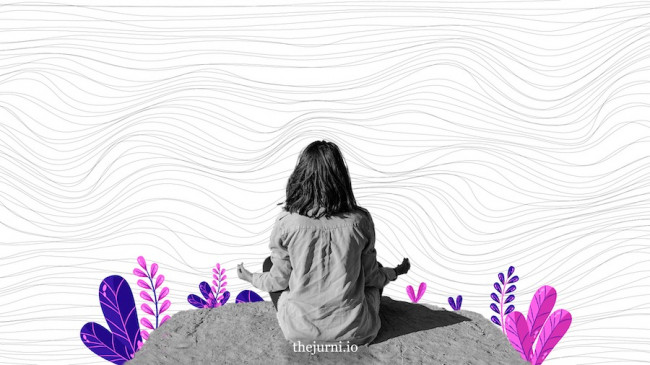
Awake. Hydrate. Meditate.
All of us have different morning routines that set the mood for the day. And, to be honest, not all of them work. So, how can you make the best of the beginning? Here’s what neuroscientists say:
⏰ Don’t wake up to a blaring alarm. Waking up mindfully, and even making time for meditation in the morning can help manage stress better, and also enhance creativity, learning, and focus. Can’t wake up without an alarm? Try these alternatives to ease you into the day.
? Water, not caffeine. And don’t eat first thing in the morning. How your gut is treated has a direct impact on the brain. So, include foods like fruits, vegetables, nuts, whole grains, and seeds in your morning meals.
?♀️ And finally, work out! Not only does exercise improve oxygen flow to the brain, but also enhances its ability for mindfulness and making new connections, while reducing the possibility of memory loss.

I Think, Therefore I Can’t
Don’t get us wrong – thinking is one of the greatest abilities we possess. It helps us reflect, innovate, create, and even doubt, which catalyses our growth, and also acts as critical proof of our existence… if Descartes is anyone to go by. But, let’s be honest – just like Rooster in the latest Top Gun instalment (a must-watch, if you haven’t already!), we’ve all been in situations where we’ve indulged our thoughts, leaving us with little to nothing to show for them.
Overthinking, which usually involves ruminating on an issue, or incessantly worrying about the outcome, can be a major deterrent to your KRAs. But overthink not – we’ve got you covered.
The first step to inculcating proactivity is keeping your eyes on the goal. Know what you want to achieve, and work backwards to create a plan to achieve it. And most critically: stay on track. The initial burst of inspiration often fades, but what will keep you going is a clear vision, are celebrations of each mini-goal you cross along the way!
The second trick is to look at failures as learnings. Don’t be afraid of getting something wrong – you’re only human. But every time you do, learn from it, and use it to constantly improve. And finally – don’t forget to have fun. After all, all work and no play makes Jack (or Jasleen) a dull boy (or girl).
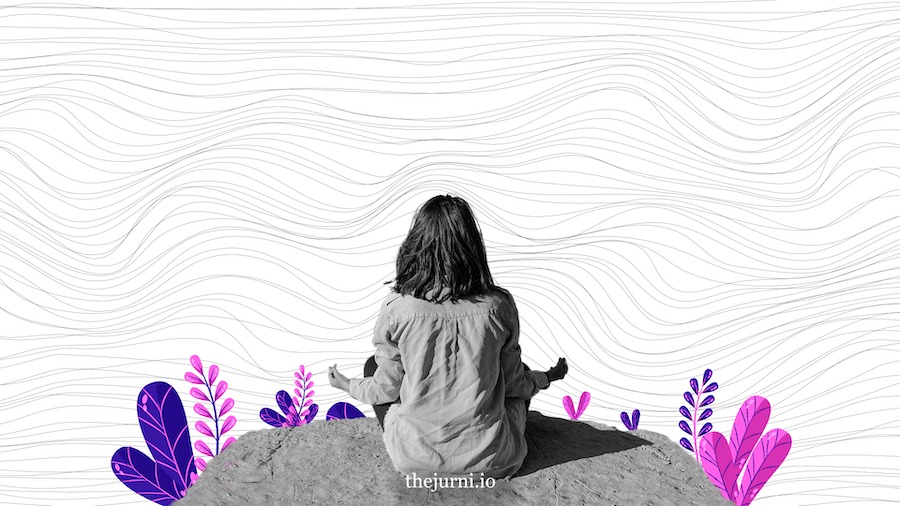
Clear Thinking for the Everyday
While we often look for diamonds among the gold, it is crucial to remind ourselves that they are all valuable. But sometimes, it is not about having it all but that one thing that really moves you.
It is the power of thought that has brought mankind to where we are – the ability to conjure thought that can be translated into reality. As a designer that is exactly what I have to do – not just think, but think outside the box.
But what if I thought around the box or over it? Bam! There is no box. Let's keep it simple. That’s what this piece meant to me.
#JurniMore: I go by the words "slow and steady" as there is no race, but only a lot to explore on this Jurni. What inspires me most are the mountains with a cup of warm tea and some Maggi, to be precise. :)
Rohan Narula, Multimedia Designer
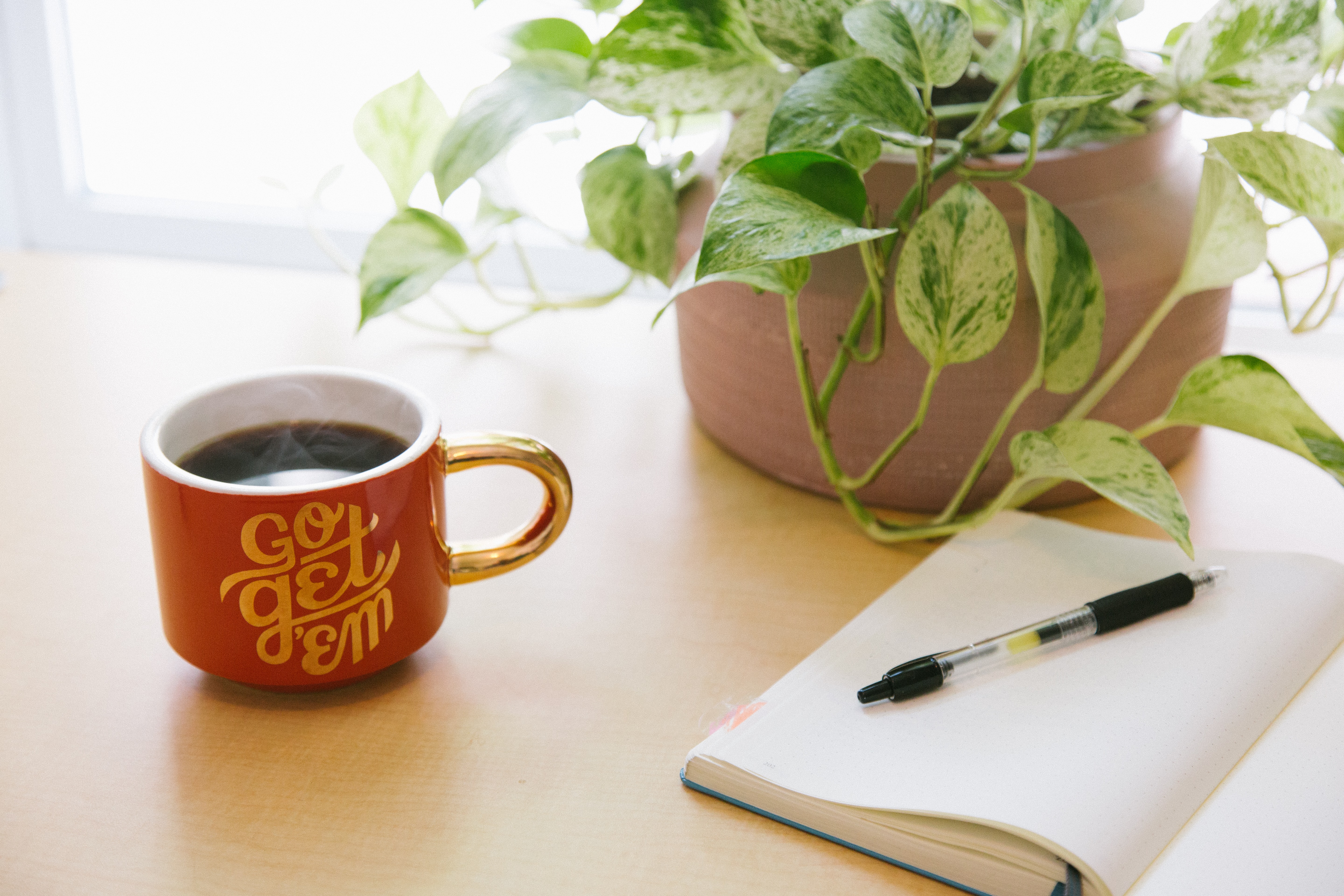
Rituals, Not Routines
Mark Cuban once said that the best of discoveries are borne out of the smallest vexations. As did Mason Currey’s discovery of rituals. His grew out of his inability to write without distraction. One thing led to another, and his fascination with the working habits of famous writers, whose days were seemingly subsumed by creative work, showed him that even writers like Franz Kafka and Virginia Woolf found writing to be an arduous task. What made it easy were daily rituals.
Unlike a routine, a ritual is an activity that eases a person into a focused mindset. “Rituals create and mark a transition towards a different kind of mental or emotional state,” Curry says.
With life returning to a new normal, rituals can help enrich one’s lives. Here’s how some flourishing professionals do it. Just remember, rituals are not just mechanical habits, they must have intention. They’re meditation if you will.
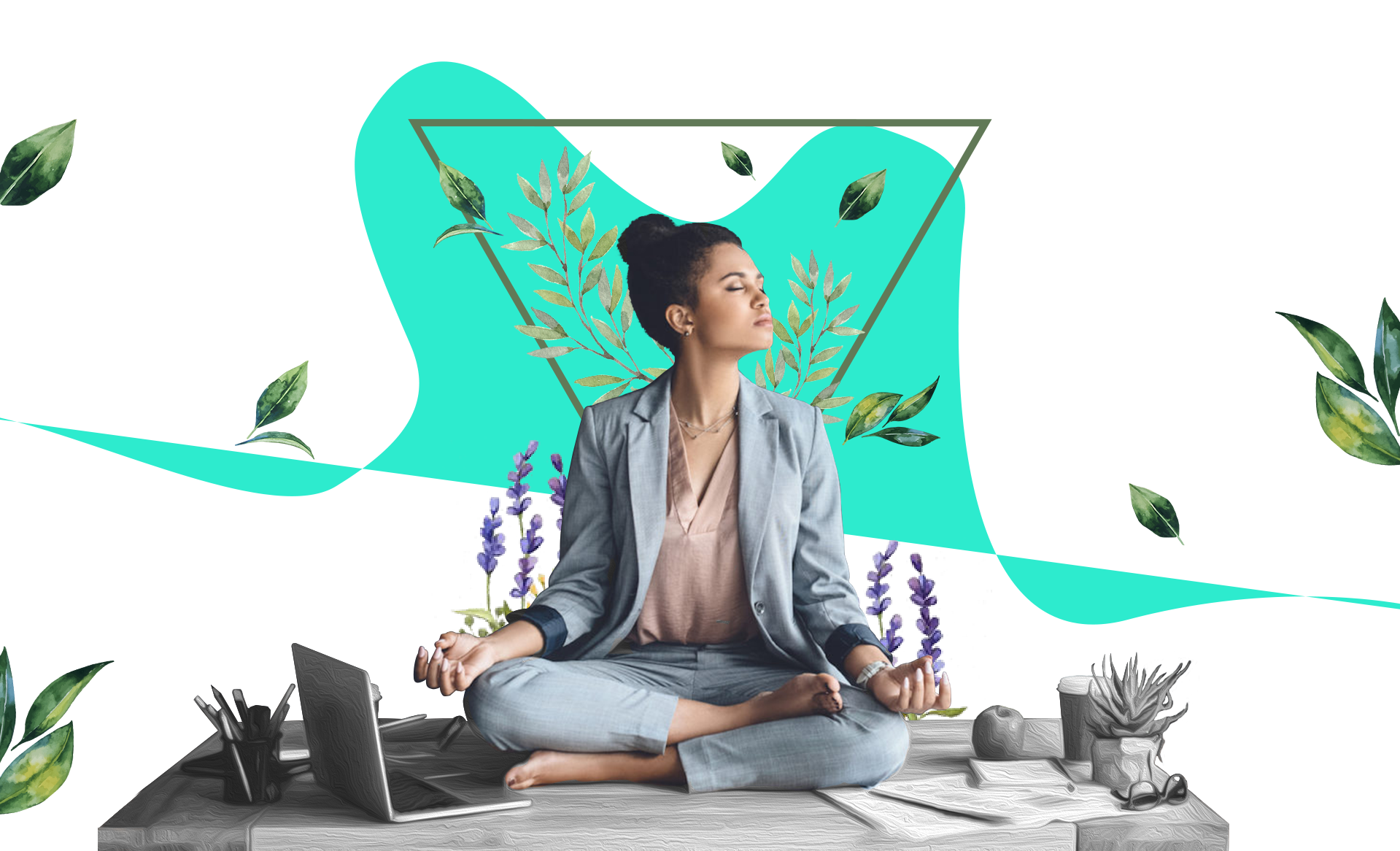
Silence Really Is Golden
To stay ahead at work, we have always been asked to keep our ears open and listen – to experts, podcasts, the news, our mentors. And while these have always provided great insights, no doubt, researchers across disciplines of neuroscience, psychology, and cardiology are asking us to listen to something very different – silence.
For a long time, unwanted noise has been associated with anxiety as it is known to activate our stress hormones. But more recently, researchers have focussed on silences, to study what they can do for our brains. This recent article in Time magazine highlights their results, which show that “’trying to hear in silence’ can demonstrably accelerate the growth of valuable brain cells” – especially those that help with memory retention.
The article traces the history of this idea to the times of the Greek polymath Pythagoras, who would advise his inner circle pupils to “Let your quiet mind listen and absorb the silence” as well as the proponents of Nada Yoga, who asked participants to notice the sounds around them, including the ringing in their own ears. Basically, listening to the age-old advice of creating a silent hour in your routine and meditating does help.
And, in case you’re a “fidgety sceptic” who finds it hard to sit still and meditate, The Sydney Morning Herald has some tips to help!
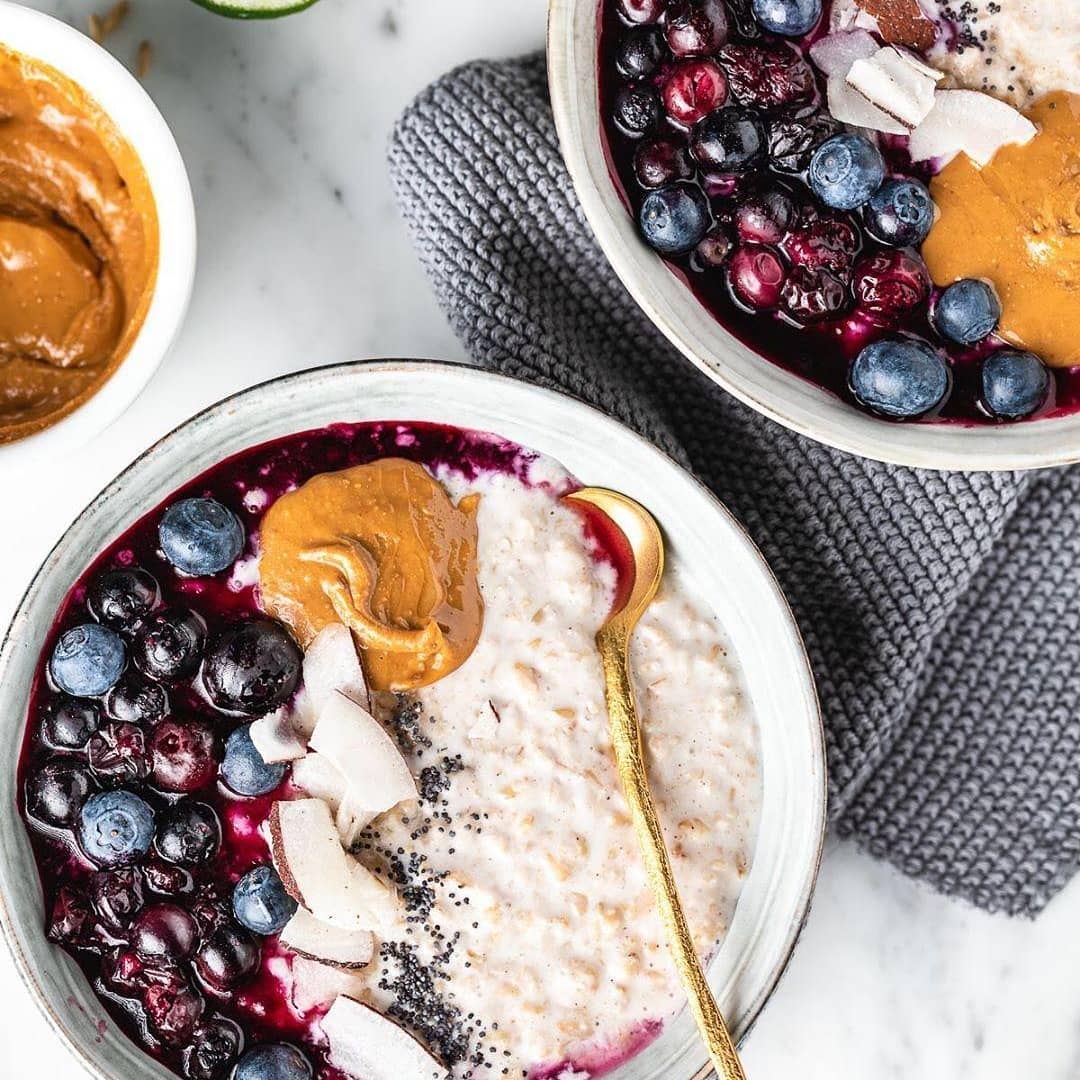
Totes Oats
Breakfast is often labelled as the most essential meal of the day, and rightfully so. But we expect our breakfast to give us a lot — health, decadence, comfort, and convenience. And while it may seem like a tall order, we’ve found just the thing to get us all that in one meal. Enter: overnight oats.
Overnight oats are raw, rolled oats that are left overnight soaked in milk, alt-milks like almond or coconut milk, or yoghurt. All you have to do is add oats to a jar along with chia, sunflower, or flax seeds. You can also add dry fruits, honey, cinnamon, vanilla essence, peanut or almond butter or any other flavour of your choosing.
Then, add enough milk to submerge the oats, close the lid and leave it overnight in the fridge. The next morning, you’ll have your soft-textured oatmeal ready. You can also blend the concoction for 15-30 seconds for better consistency. Some people top their overnight oats with fruits. You can get some ideas for your recipe here.
Overnight oats contain many vitamins and minerals, including manganese, phosphorus, magnesium, copper, iron, and zinc. Perhaps the best part is that you can mostly prepare your breakfast the night before and not skip the meal in the rush of things in the morning.
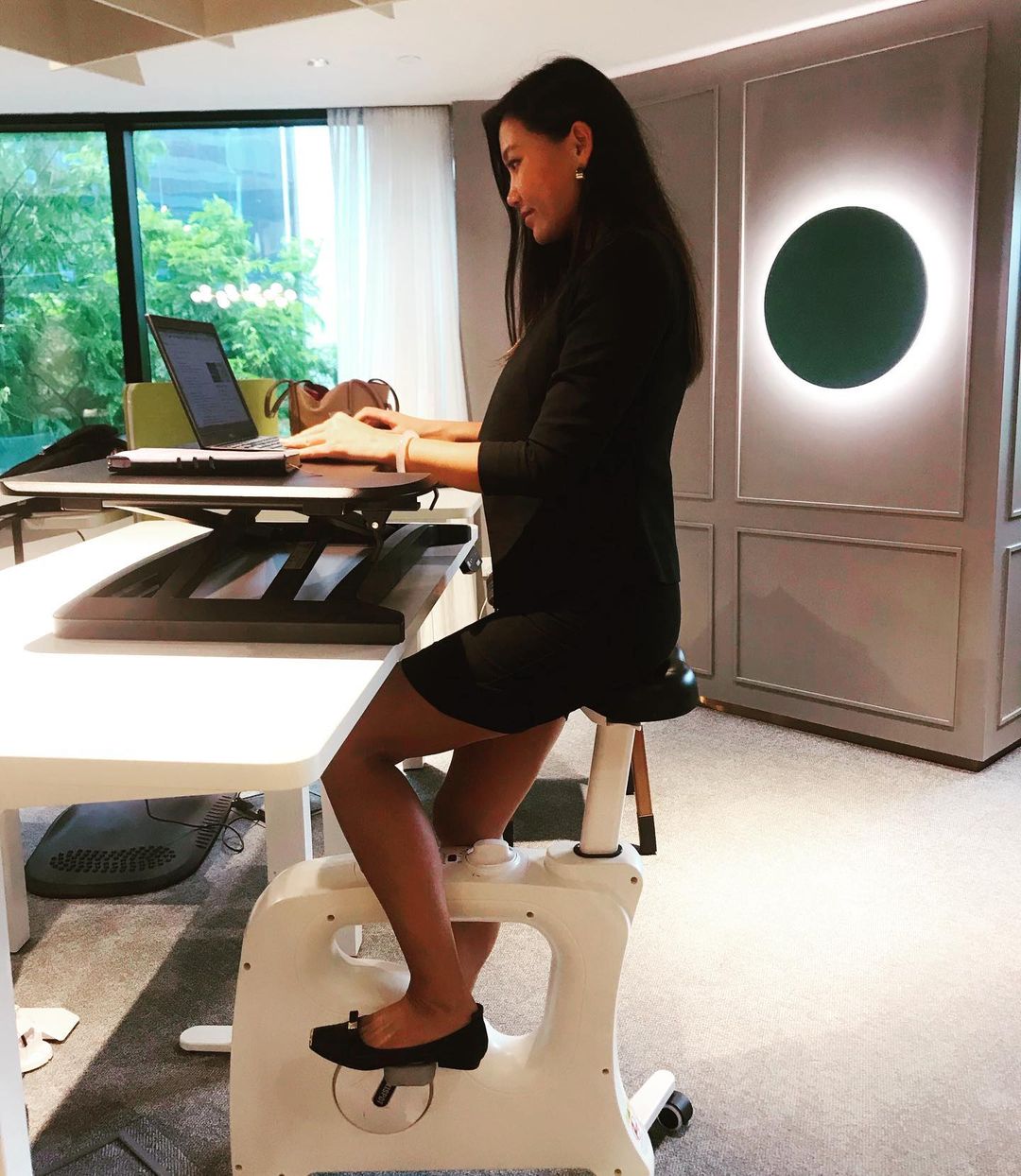
Exersnacking
The phrase one step at a time has become almost like a pinned quote on Instagram (and the usual advice from the wise ones in our friends circle). Well, we aren’t complaining because it seems to work. But using a similar motto for exercise can be equally life-changing and make working out seem less daunting.
Think of it like snacking, but for exercise. Let’s face it, the most difficult part of an exercise routine is starting it. The moment we think of running for 30 minutes or more, some of us run for the hills (in our heads). But it doesn’t have to be that way. “We need to get away from an all-or-nothing approach and embrace a philosophy of something is better than nothing,”John Jakicic, a professor at University of Kansas Medical Center, told the Wall Street Journal recently.
There has been a marked increase in the number of people who follow a sedentary lifestyle. We are either working at our desks or binge-watching on the couch for almost 12 hours a day. Taking a break from sitting every couple of hours, and performing a ten-minute exercise – which can be anything from dancing, to playing with kids in the park or just a brisk walk, can do more for you than you think.
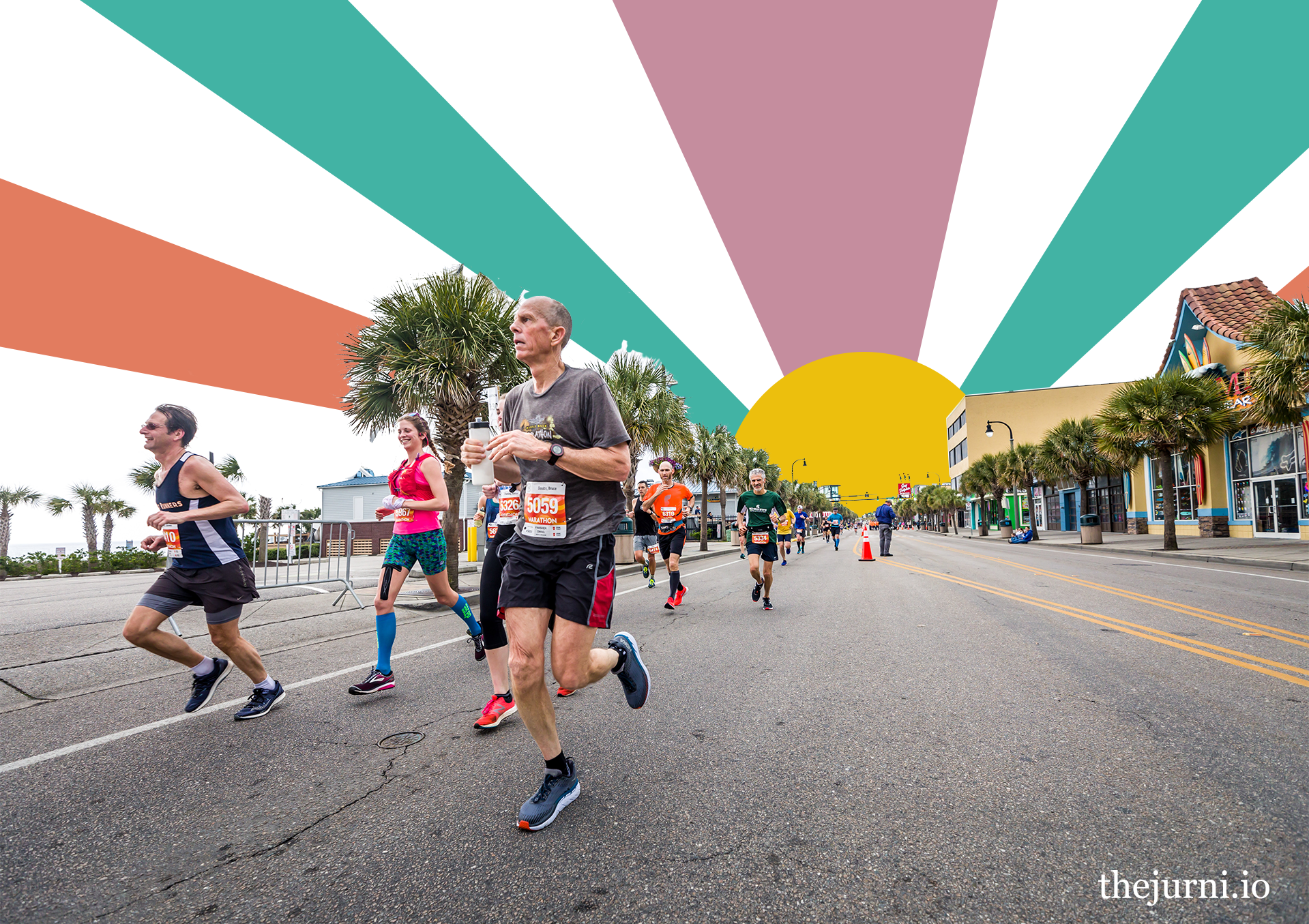
Run like a Master
We’ve said this before, and we’ll say it again – a runner’s high is unlike any other. Feeling your heartbeat as the wind brushes against your frame. Finding the rhythm and balance in your movement as the euphoria takes over. Sensing your mind unlock as your cognitive and mental abilities improve. If there’s one thing a working professional must include in their routine, it’s a good workout – and running is a great one!
Having said that, running doesn’t come without risks. As we get older and our bodies begin to change, the probability of getting injured increases. But fret not! Just like the 100-year-old grannies competing at national and international level Masters games this year, you too can prep your body to run faster and prevent injuries.
The very first thing to keep in mind is pace. If you’re just starting to run, or have noticed your body unable to take the same pressures as it once did, slow down. Instead of running more, aim to run smarter – identify your comfort with speed and push it in intervals of short sprints. With time, you’ll recognise your body beginning to adapt to more intense sessions.
And while warm-ups are the key to taking care of your body, strengthening specific muscles can go a long way in supporting your body in the long run (literally). For a detailed guide to running safely, follow this link.
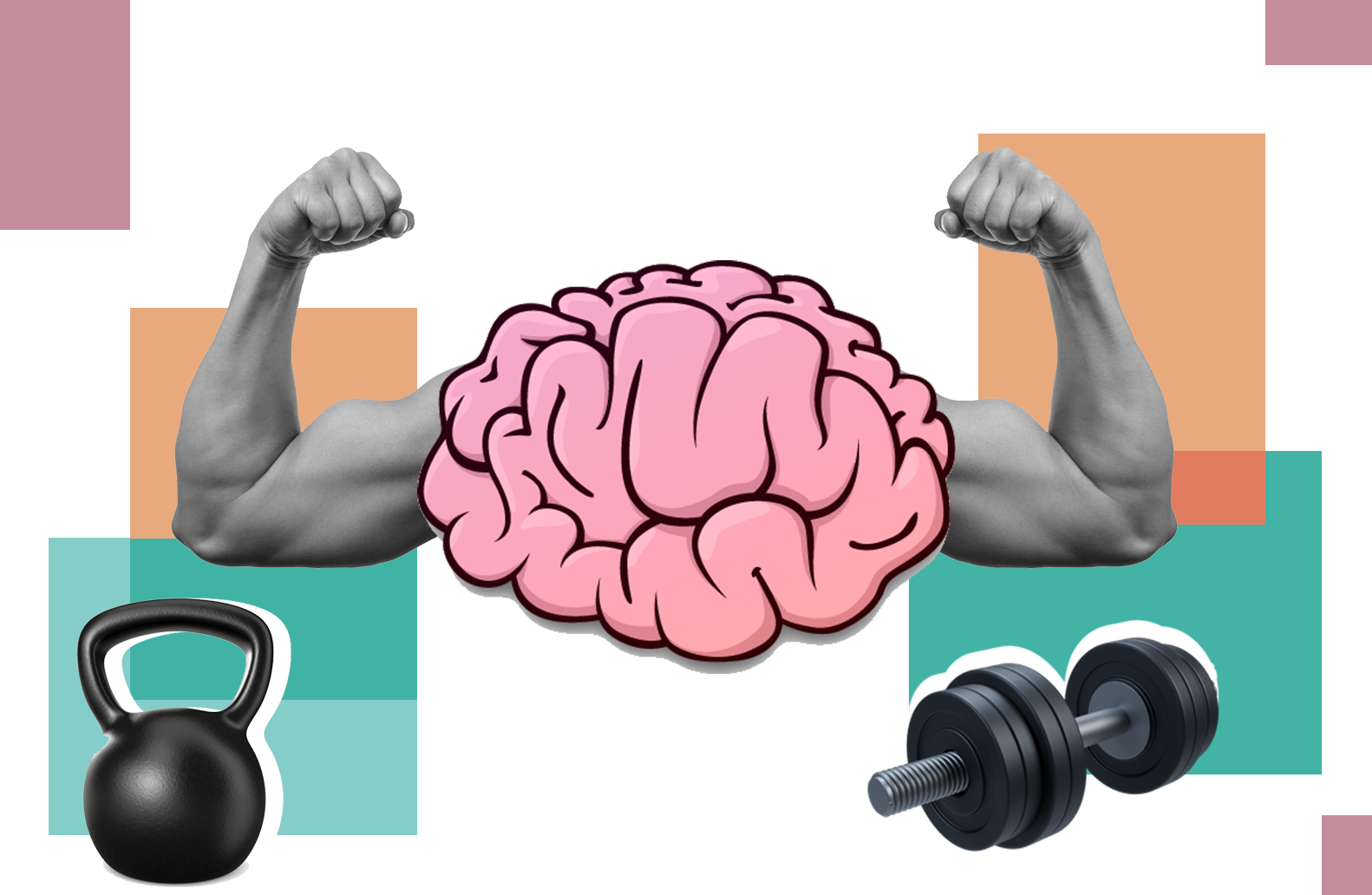
Brain Gain
Our brains are one of our greatest assets – they allow us to think, learn, and process information. However, like any other organ in our body, they need proper care to perform well. So, how do you enhance your brain’s processes? And how can it help you at work? We look into several ways that can help improve our brain power and enhance our cognitive abilities.
One simple way to boost brain function is by shifting the mode of working. Our brains can get used to routine tasks, and so, by switching up tasks or environments, we can challenge our brains to think differently and create new neural pathways.
Physical exercise is also essential for brain health. Studies have shown that exercise can improve cognitive function, memory, and mood. Exercise increases blood flow and oxygen to the brain, which can enhance its capabilities.
On the other hand, a healthy diet rich in antioxidants, vitamins, and minerals can play a crucial role in age-related decline. Also, drinking plenty of water can prevent impairing our cognitive abilities.
Finally, getting enough rest is crucial too. During sleep, the brain consolidates memories and processes information, so getting enough rest is essential for optimal brain function.

Get the Balance Right
What are a few practices you swear by to maintain a good work-life balance? A study conducted by Arcadis – a consultancy firm in Amsterdam – a few years ago, found that Indians work 2,195 hours (on average) yearly, unlike Hamburg, Germany, ranked among the top 3 cities for work-life balance in the world, which had workers putting in 1,473 hours. And, the numbers have only been going up. Though it is essential to acknowledge situational differences (at least to some extent), we were curious to find out what some countries do differently to achieve this equilibrium.
Turns out, a lot can be changed with minor tweaks
For instance, in France, one of the top ten countries where employees enjoy a good work-life balance, conversations apart from those revolving around work are highly encouraged, especially around subjects such as art, design, and literature. The practice of conversing is steeped in French culture, and helps workers to not constantly think about work but develop well-rounded thinking. The ‘right to disconnect’, which prevents employees from being liable to reply to emails or texts after work hours, or even their sacrosanct lunch hours are some other great examples.
In Sweden, the answer lies in a sweet practise (literally)
In many Swedish companies, it’s mandatory for all workers to have a designated time for fika — which translates to munching sweet treats, drinking coffee, and chatting. “More than a coffee break, fika is a time to share, connect and relax with colleagues. Some of the best ideas and decisions happen at fika,” Matts Johansson, founder of Swedish coffee chain Da Matteo, told the BBC. The practice has become a global trend, with several cities in the US and Australia adopting it to boost productivity.
But how do we know what works for us?
Many countries have unique practices that ensure a good work-life balance for workers. But like any individual, every country has its own needs, mindset, and culture. What might work for someone else might not always work for us, but flexibility is key to understanding what does. And, if work-life balance is what we are striving for, India will have to be open to experimentation. Anyone else thinking about embracing the four-day work week?